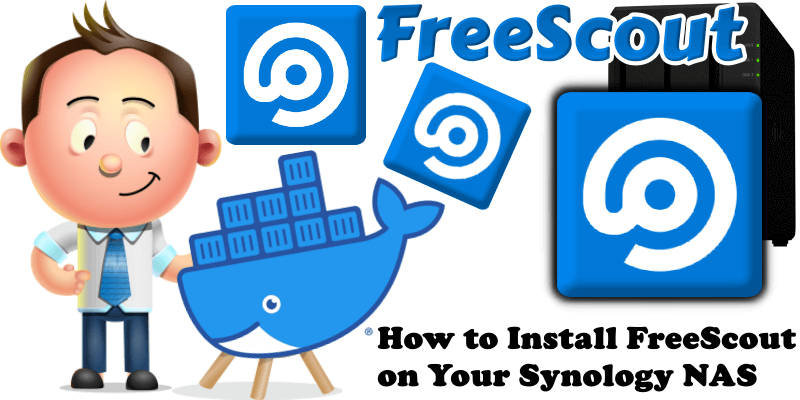
FreeScout is the super lightweight and powerful free open source help desk and shared inbox written in PHP (Laravel framework). It is a self hosted clone of HelpScout. Now you can enjoy free Zendesk & Help Scout without giving up privacy or locking you into a service you don’t control. The things I like the most about FreeScout are its speed, the way it’s coded and, last but not least, the privacy it offers. In this step by step guide I will show you how to install FreeScout on your Synology NAS using Docker & Portainer.
STEP 1
Please Support My work by Making a Donation.
STEP 2
Install Portainer using my step by step guide. If you already have Portainer installed on your Synology NAS, skip this STEP. Attention: Make sure you have installed the latest Portainer version.
STEP 3
Make sure you have a synology.me Wildcard Certificate. Follow my guide to get a Wildcard Certificate. If you already have a synology.me Wildcard certificate, skip this STEP.
STEP 4
Go to Control Panel / Login Portal / Advanced Tab / click Reverse Proxy. Follow the instructions in the image below.
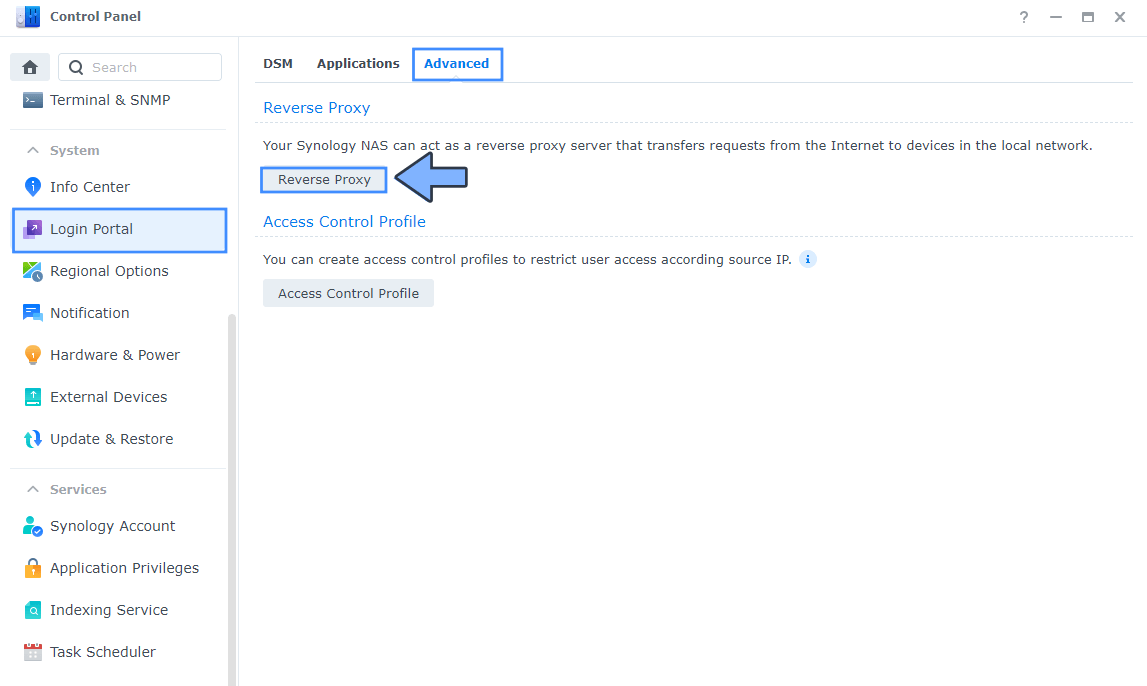
STEP 5
Now click the “Create” button. Follow the instructions in the image below.
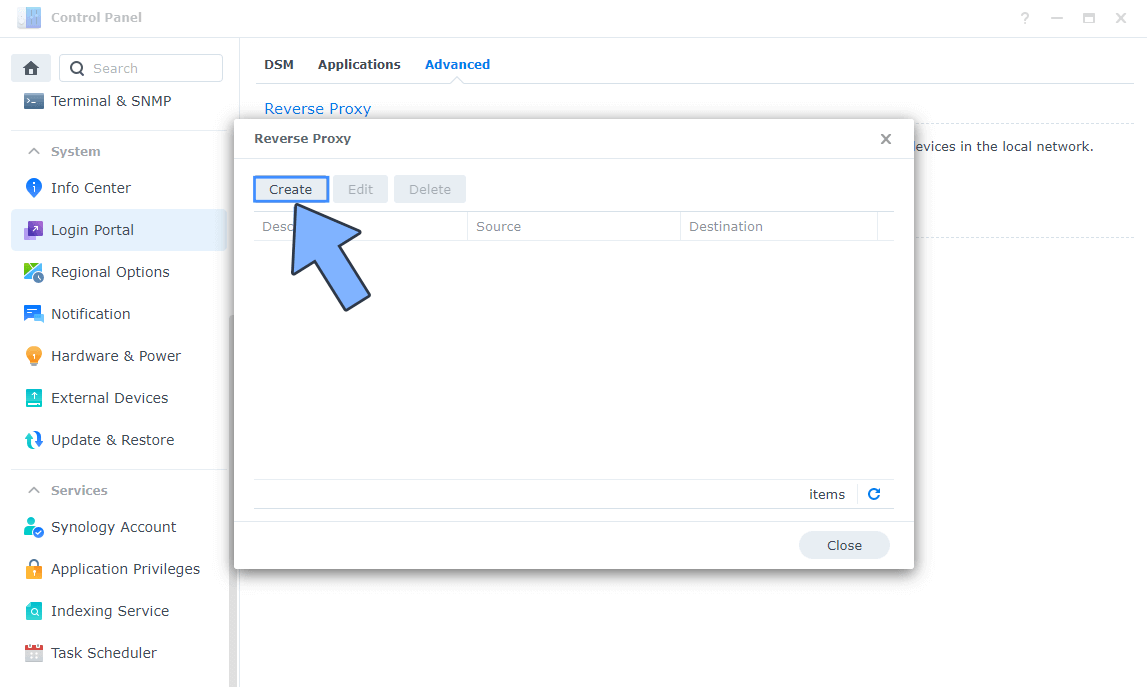
STEP 6
After you click the Create button, the window below will open. Follow the instructions in the image below.
On the General area, set the Reverse Proxy Name description: type in FreeScout. After that, add the following instructions:
Source:
Protocol: HTTPS
Hostname: freescout.yourname.synology.me
Port: 443
Check Enable HSTS
Destination:
Protocol: HTTP
Hostname: localhost
Port: 5135
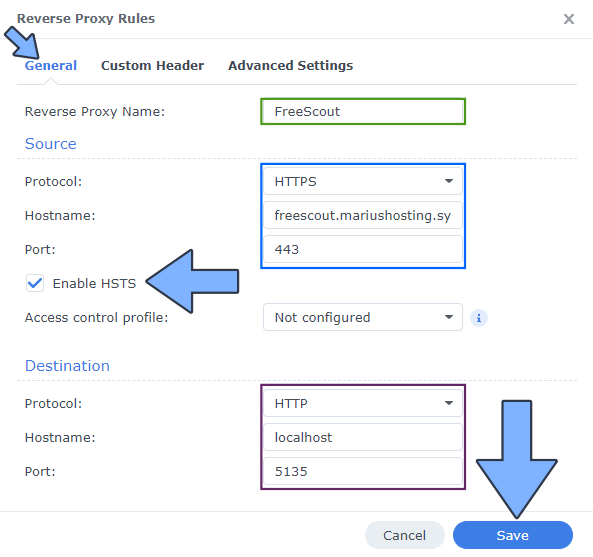
STEP 7
On the Reverse Proxy Rules, click the Custom Header tab. Click Create and then, from the drop-down menu, click WebSocket. After you click on WebSocket, two Header Names and two Values will be automatically added. Click Save. Follow the instructions in the image below.

STEP 8
Go to Control Panel / Network / Connectivity tab/ Check Enable HTTP/2 then click Apply. Follow the instructions in the image below.

STEP 9
Go to Control Panel / Security / Advanced tab/ Check Enable HTTP Compression then click Apply. Follow the instructions in the image below.
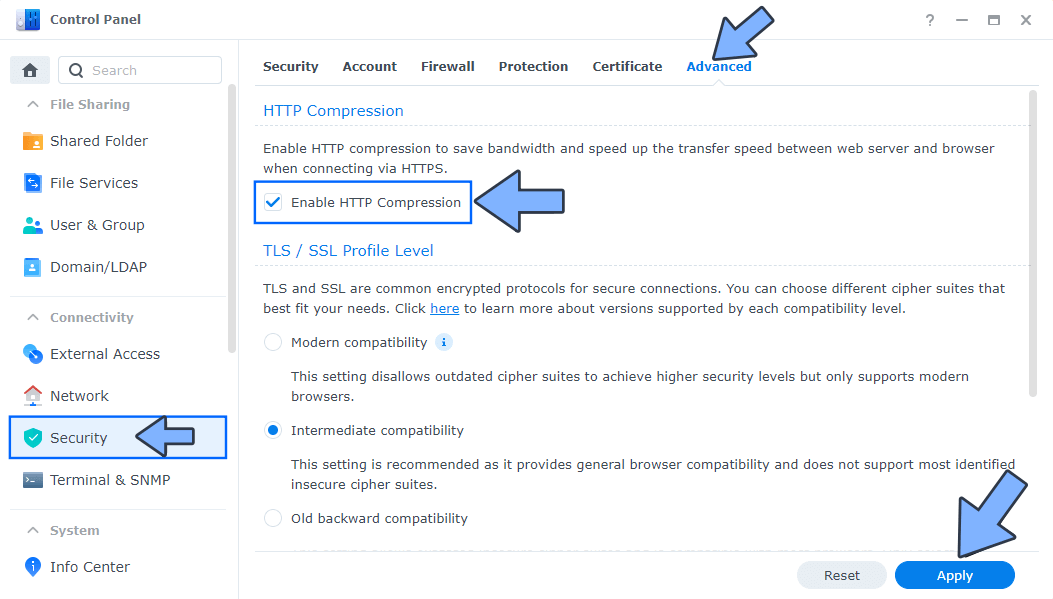
STEP 10
Go to File Station and open the docker folder. Inside the docker folder, create one new folder and name it freescout. Follow the instructions in the image below.
Note: Be careful to enter only lowercase, not uppercase letters.
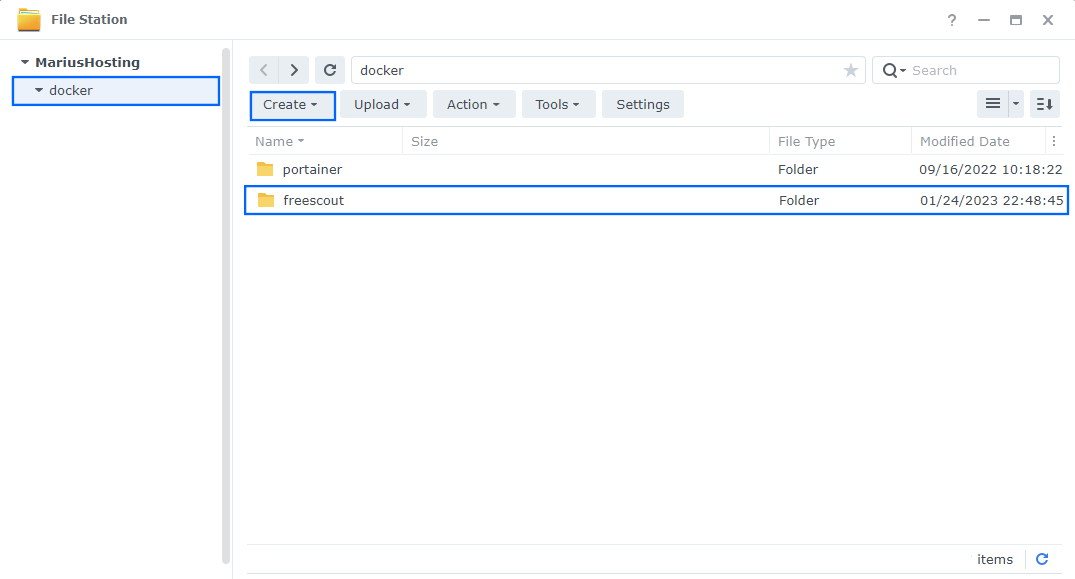
STEP 11
Now create three new folders inside the freescout folder that you created at STEP 10 and name them logs, db, data. Follow the instructions in the image below.
Note: Be careful to enter only lowercase, not uppercase letters.
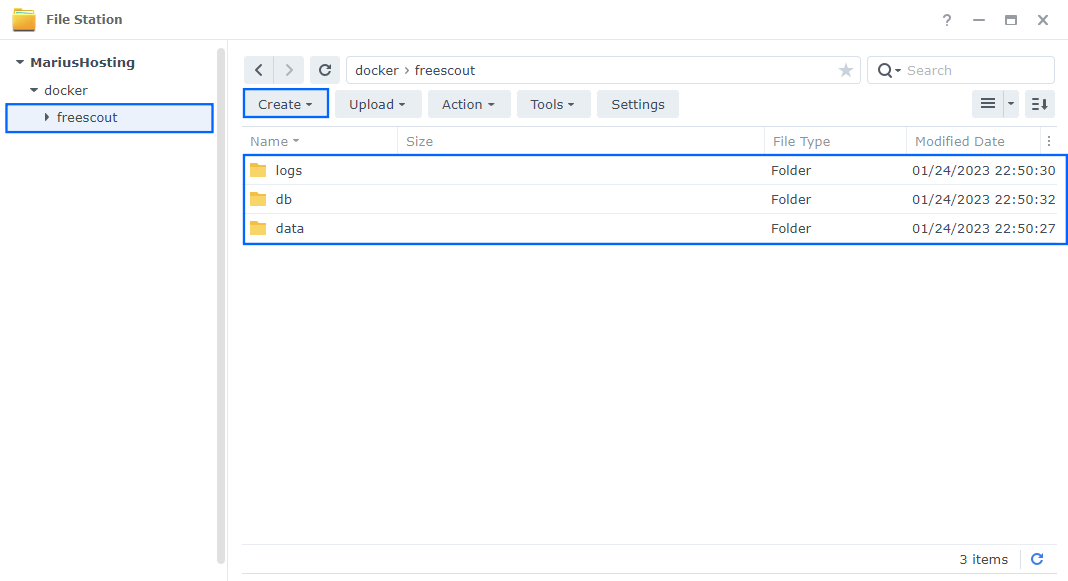
STEP 12
Log into Portainer using your username and password. On the left sidebar in Portainer, click on Home then Live connect. Follow the instructions in the image below.

On the left sidebar in Portainer, click on Stacks then + Add stack. Follow the instructions in the image below.

STEP 13
In the Name field type in freescout. Follow the instructions in the image below.
services:
db:
image: mariadb:11.4-noble #LTS Long Time Support Until May 29, 2029.
container_name: Freescout-DB
hostname: freescout-db
mem_limit: 1g
cpu_shares: 768
security_opt:
- no-new-privileges:false
volumes:
- /volume1/docker/freescout/db:/var/lib/mysql:rw
environment:
MYSQL_ROOT_PASSWORD: rootpass
MYSQL_USER: freescoutuser
MYSQL_PASSWORD: freescoutpass
MYSQL_DATABASE: freescout
TZ: Europe/Bucharest
restart: on-failure:5
freescout:
image: ghcr.io/tiredofit/docker-freescout:latest
container_name: Freescout
hostname: freescout
mem_limit: 1g
cpu_shares: 768
security_opt:
- no-new-privileges:true
healthcheck:
test: curl -f http://localhost:80/ || exit 1
ports:
- 5135:80
volumes:
- /volume1/docker/freescout/data:/data:rw
- /volume1/docker/freescout/logs/:/www/logs:rw
environment:
ADMIN_EMAIL: yourown@email
ADMIN_PASS: mariushosting
SITE_URL: https://freescout.yourname.synology.me
ENABLE_SSL_PROXY: true
DB_HOST: freescout-db
DB_NAME: freescout
DB_USER: freescoutuser
DB_PASS: freescoutpass
restart: on-failure:5
depends_on:
db:
condition: service_started
Note: Before you paste the code above in the Web editor area below, change the value for TZ. (Select your current Time Zone from this list.)
Note: Before you paste the code above in the Web editor area below, change the value for ADMIN_EMAIL and type in your own email address.
Note: Before you paste the code above in the Web editor area below, change the value for ADMIN_PASS and add your own password. mariushosting is an example for a password. You have to insert your own password.
Note: Before you paste the code above in the Web editor area below, change the value for SITE_URL and type in your own synology.me DDNS with https:// at the beginning that you have previously created at STEP 6.
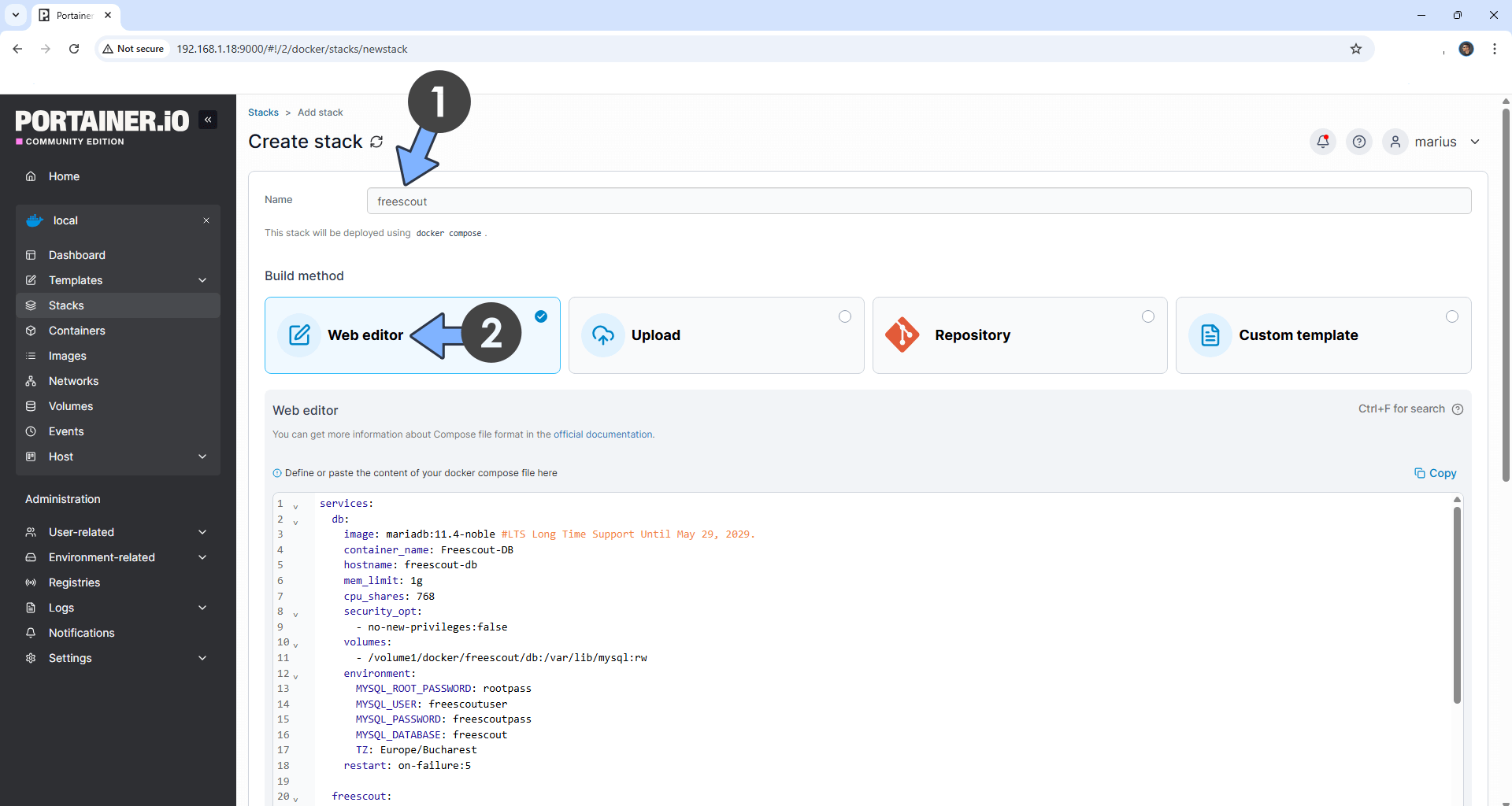
STEP 14
Scroll down on the page until you see a button named Deploy the stack. Click on it. Follow the instructions in the image below. The installation process can take up to a few minutes. It will depend on your Internet speed connection.
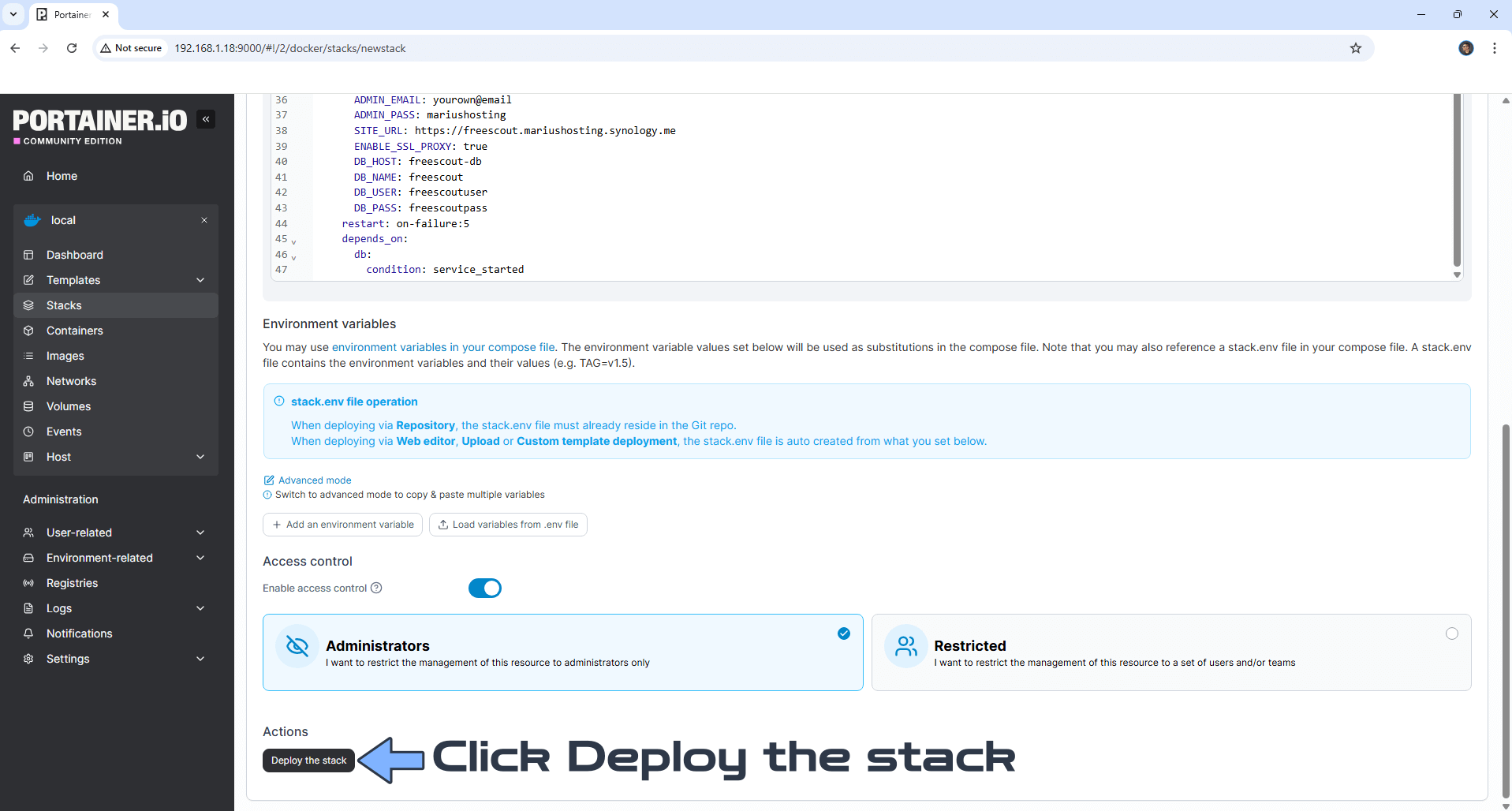
STEP 15
If everything goes right, you will see the following message at the top right of your screen: “Success Stack successfully deployed“.

STEP 16
🟢Please Support My work by Making a Donation. Almost 99,9% of the people that install something using my guides forget to support my work, or just ignore STEP 1. I’ve been very honest about this aspect of my work since the beginning: I don’t run any ADS, I don’t require subscriptions, paid or otherwise, I don’t collect IPs, emails, and I don’t have any referral links from Amazon or other merchants. I also don’t have any POP-UPs or COOKIES. I have repeatedly been told over the years how much I have contributed to the community. It’s something I love doing and have been honest about my passion since the beginning. But I also Need The Community to Support me Back to be able to continue doing this work.
STEP 17
Now open your browser and type in your HTTPS/SSL certificate like this https://freescout.yourname.synology.me In my case it’s https://freescout.mariushosting.synology.me If everything goes right, you will see the FreeScout Login page. Type in your own Email address and Password that you have previously created at STEP 13, then click Login. Follow the instructions in the image below.
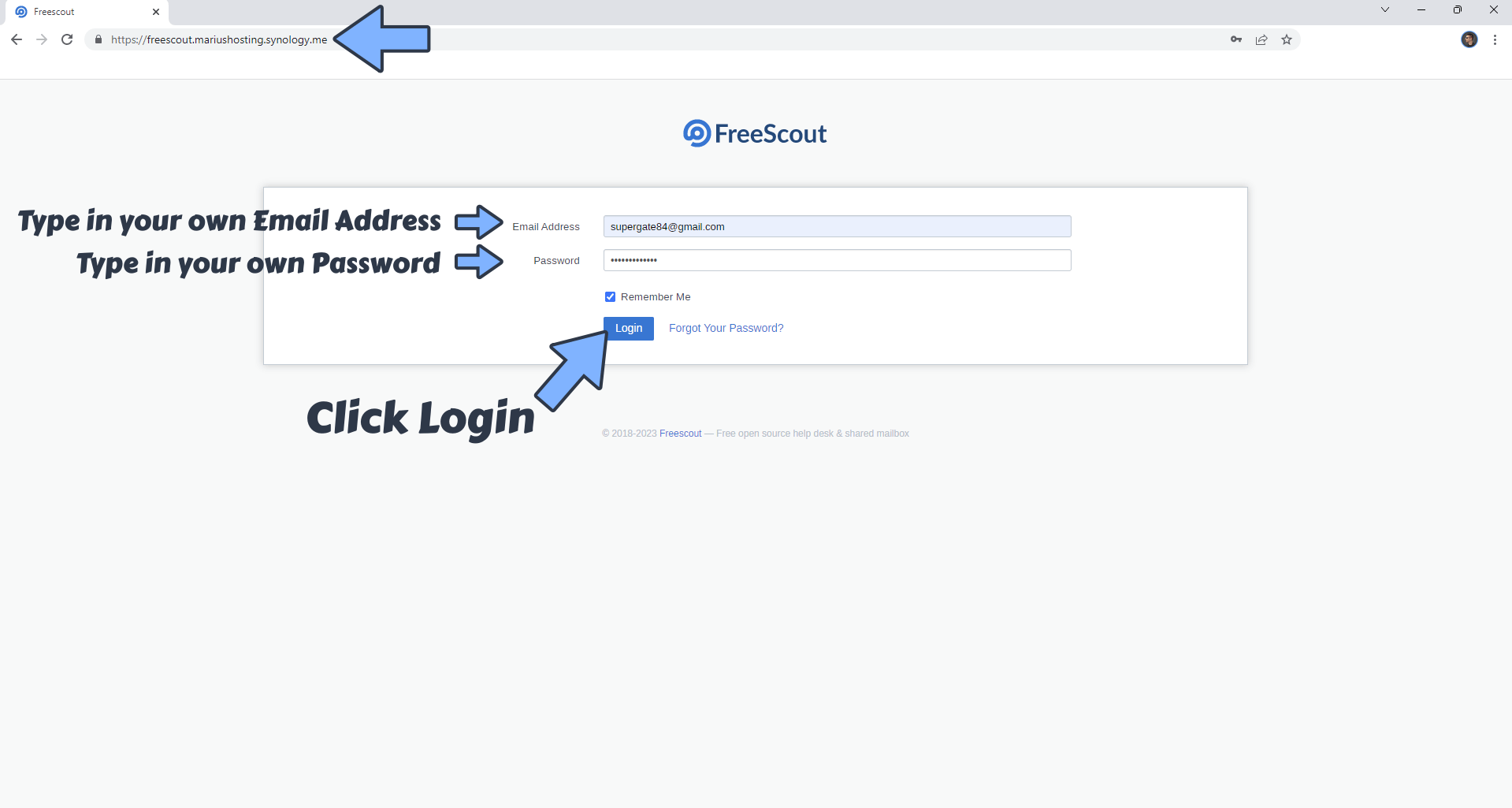
STEP 18
At the top left of the page click Manage, then Settings. Follow the instructions in the image below.
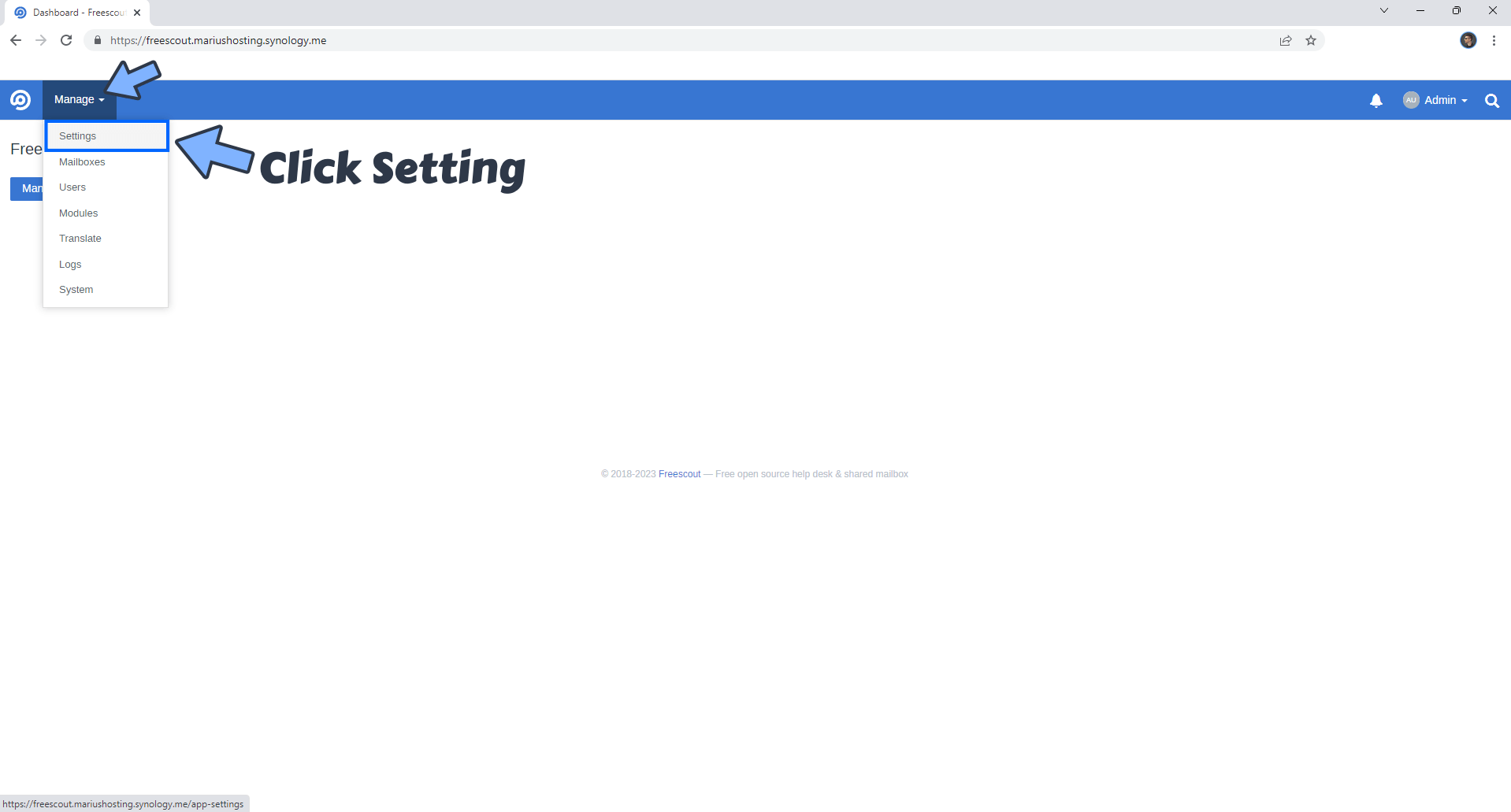
STEP 19
Follow my step by step guide on how to activate SMTP for your Gmail account. This step is mandatory. Note: If you don’t want to use the easiest way for SMTP with Google and you already have SMTP details from your own Mail Server, you can just skip this STEP and use your personalized email SMTP details instead.
STEP 20
On the left sidebar click Mail Settings. Add your own SMTP details that you have previously created at STEP 19 then click Save.
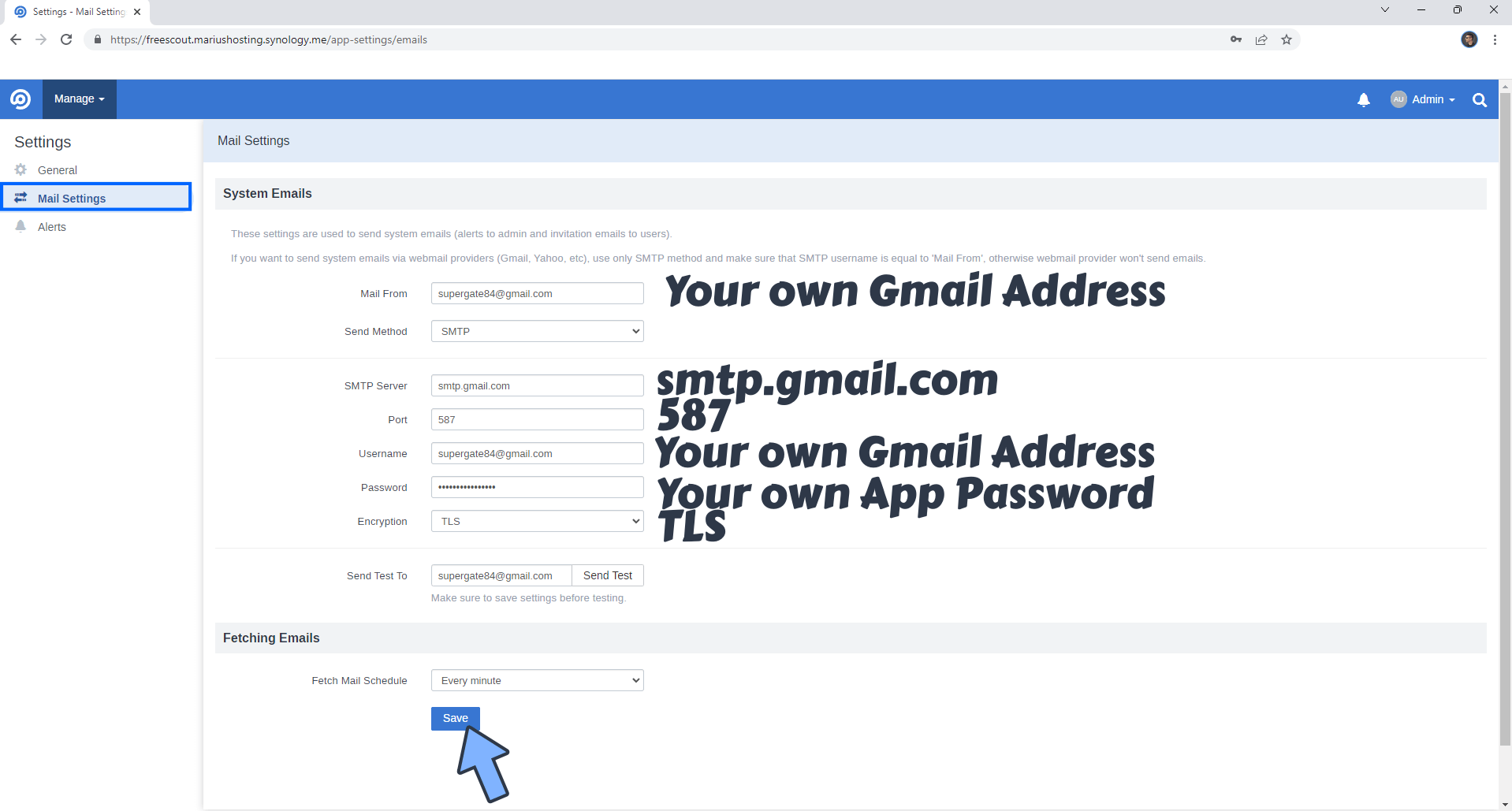
STEP 21
Test your own email. Type in your own email in the Send Test To field, then click Send Test. Follow the instructions in the image below.
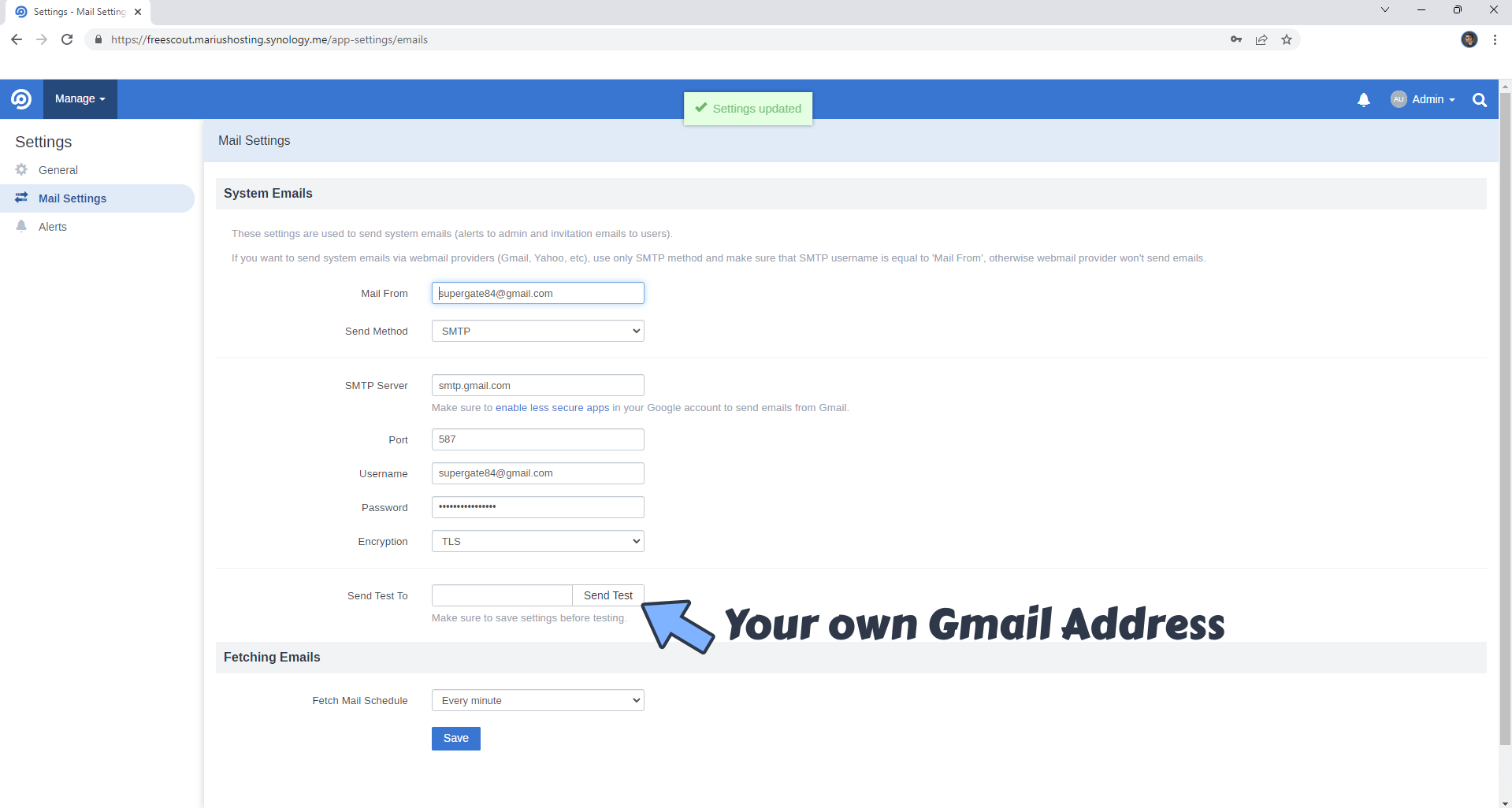
STEP 22
If everything goes right, you will see the following message at the top center of your screen: “Email passed for delivery“. Follow the instructions in the image below.
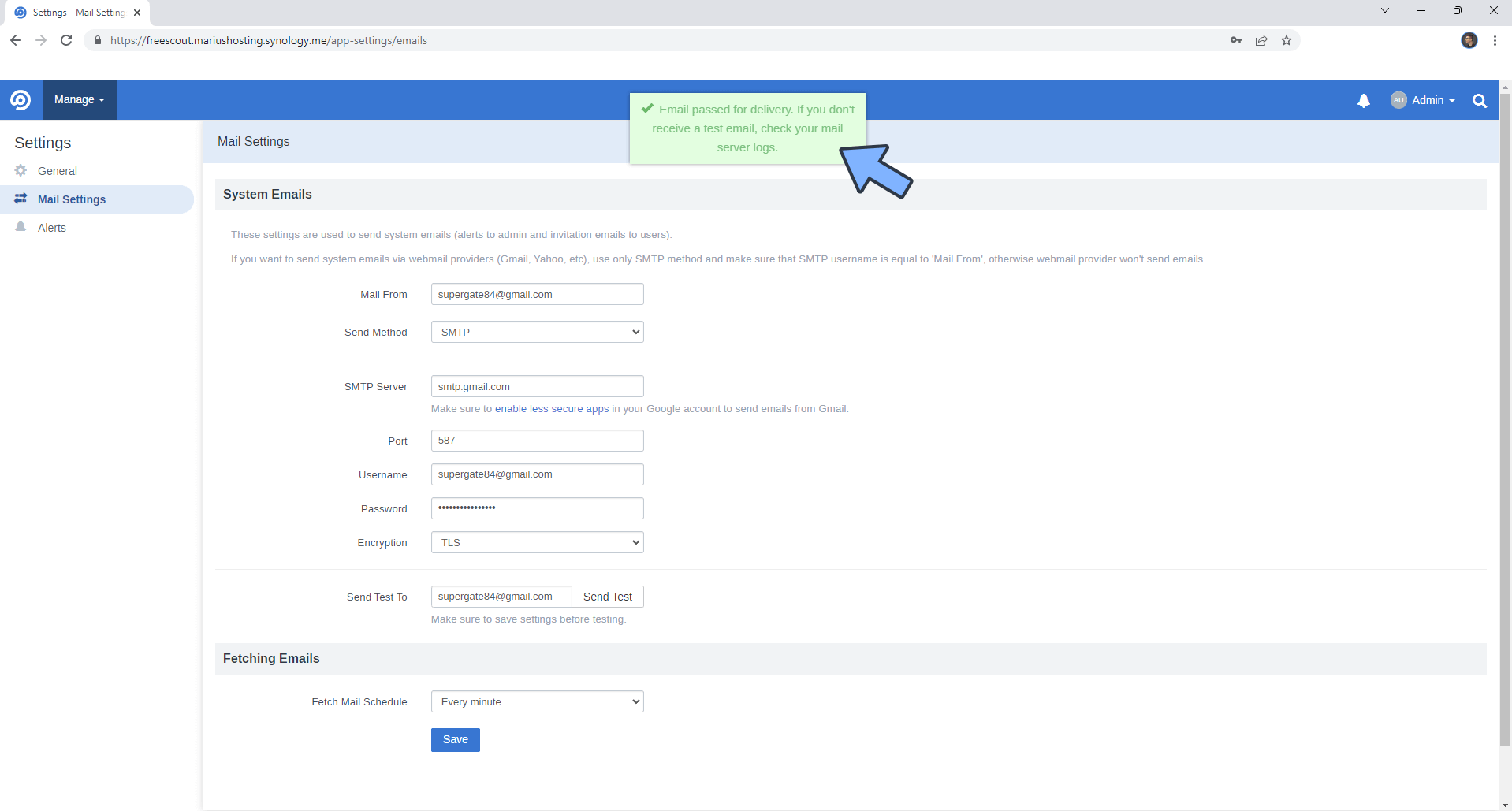
STEP 23
Check your mailbox. The test email that reaches your Gmail will say: Congratulations! Your application can send emails!. Follow the instructions in the image below.
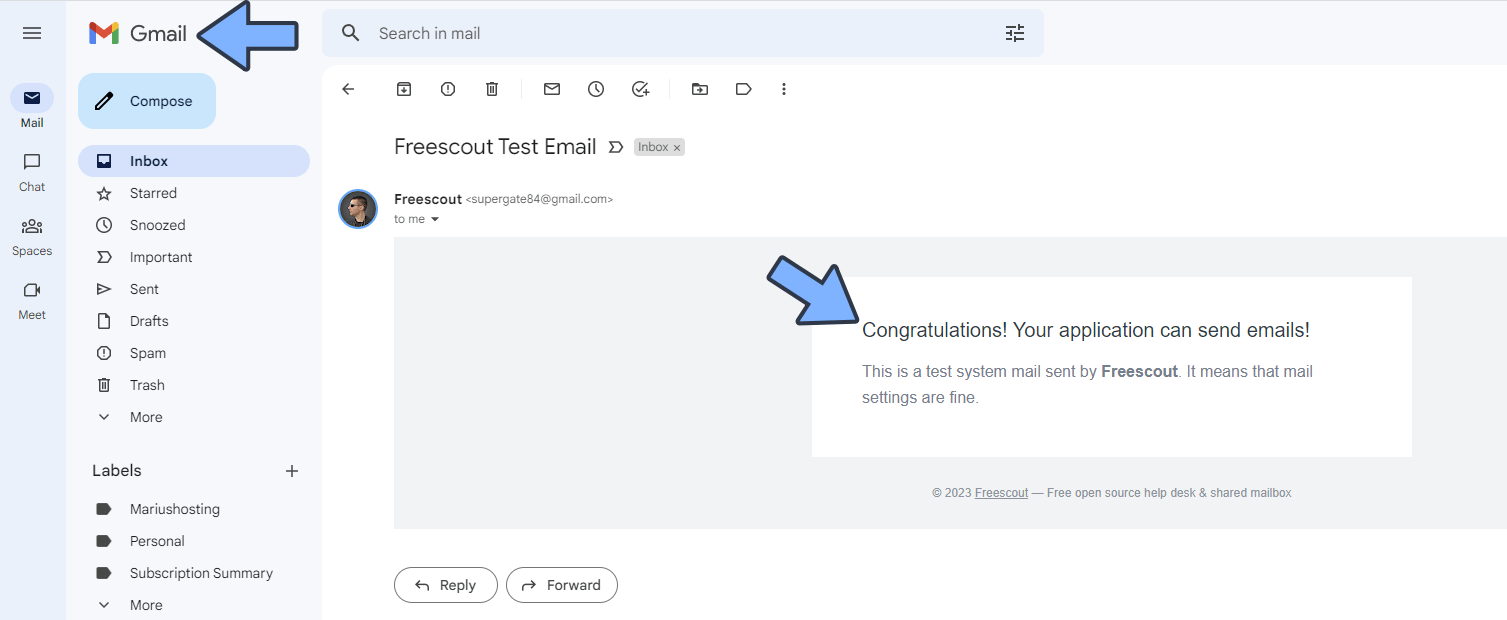
STEP 24
FreeScout is free, but you can buy some extra modules to improve your work (the modules are affordable). At the top left of the page click Manage then Modules. Follow the instructions in the image below.
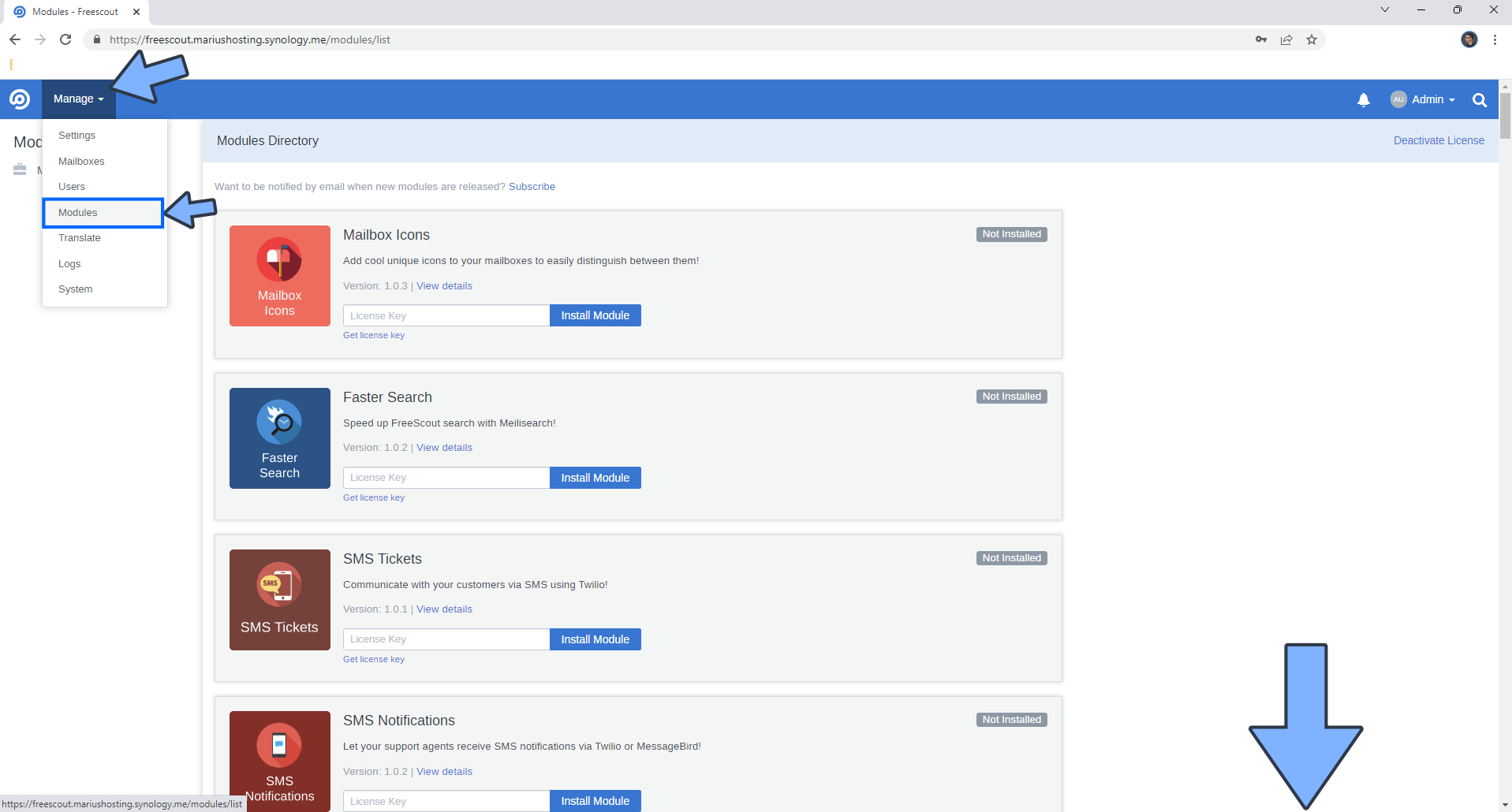
STEP 25
For example, I have purchased the module “Dark Mode” that cost me only 3 EUR. By clicking View details you will be redirected to the FreeScout purchase page. After you pay, you will get a license key. Type in your License Key in the Get license key field then click Install Module. Follow the instructions in the image below.

STEP 26
After the module is installed, click Activate to activate it. Follow the instructions in the image below.
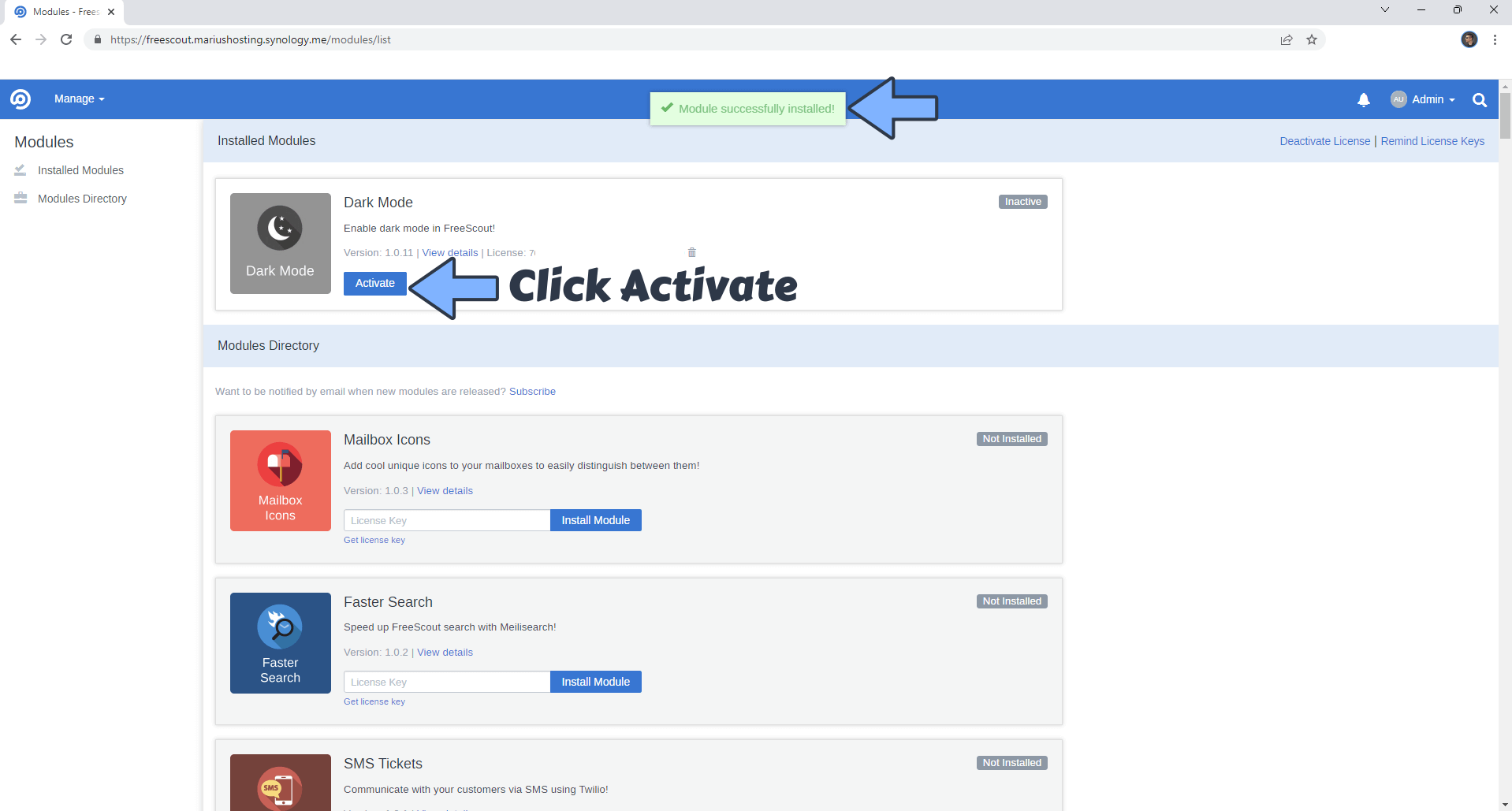
STEP 27
As you can see in the image below, the Dark Mode button will magically appear in your FreeScout dashboard right after Manage. Follow the instructions in the image below.
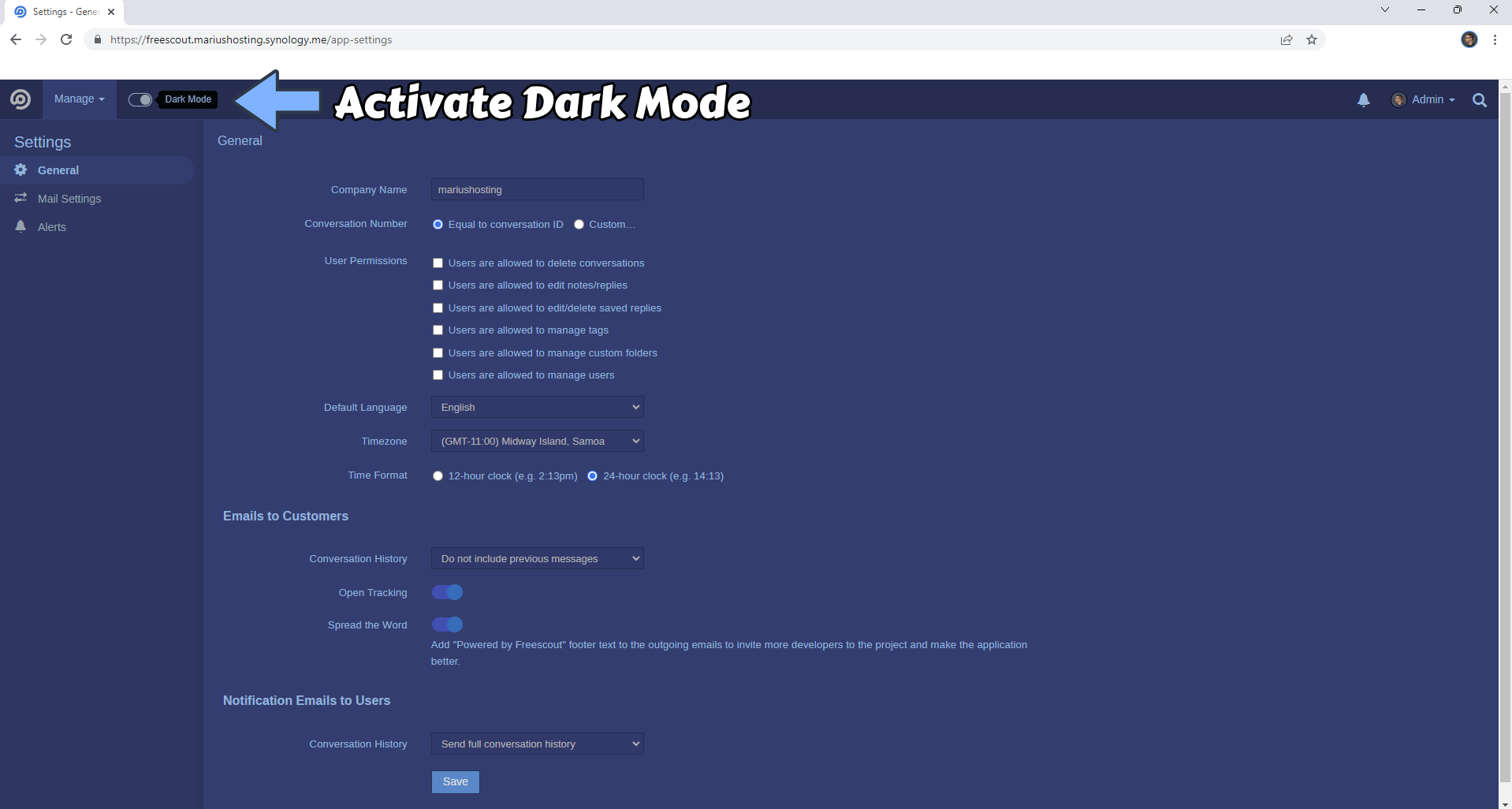
STEP 28
When you add a new Mailbox, you need to set up your own SMTP details to be able to send emails and your own IMAP details to be able to receive emails. Note: It’s mandatory to hit the Save Settings button once you add your own details.
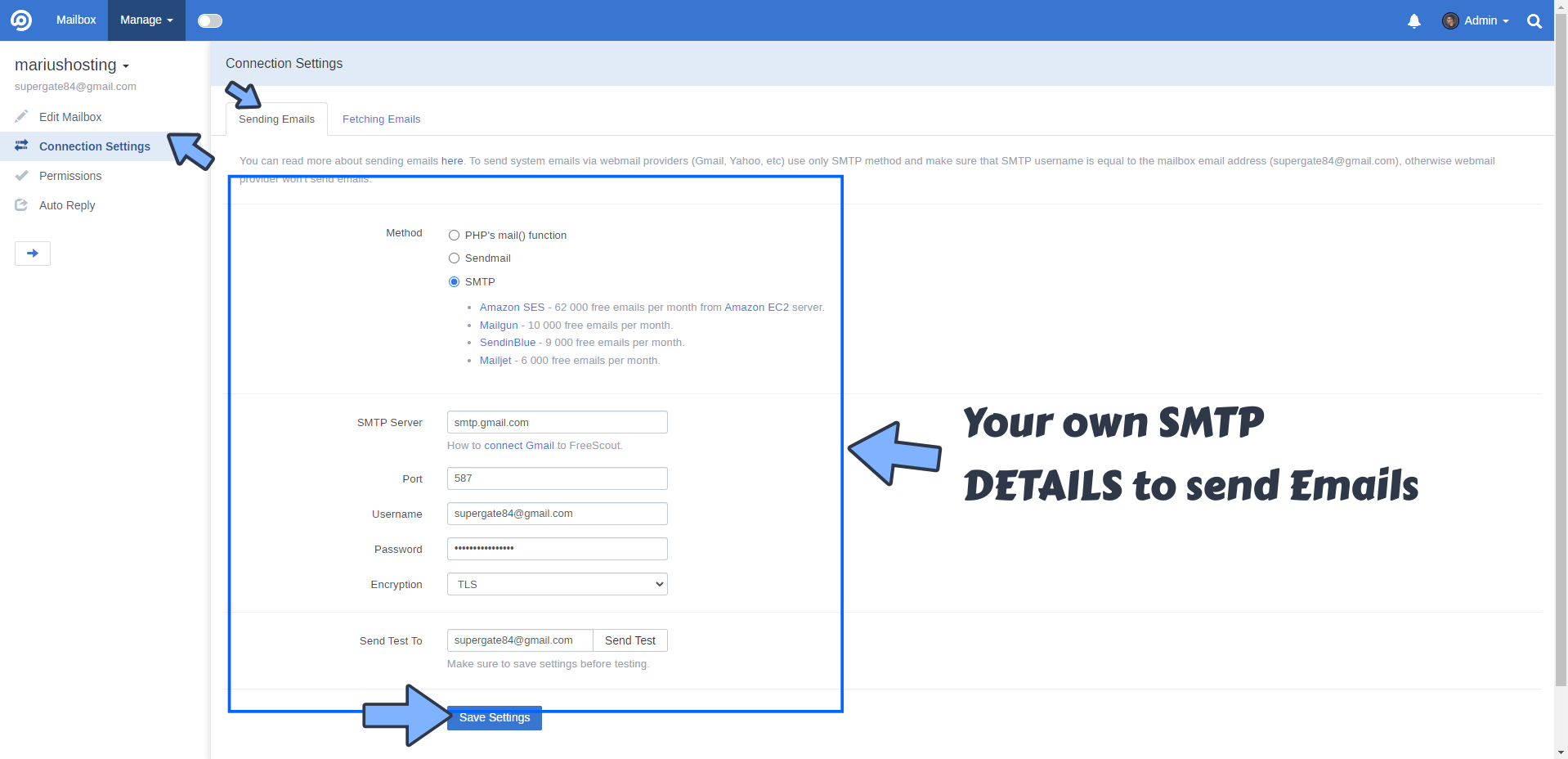
IMAP details.
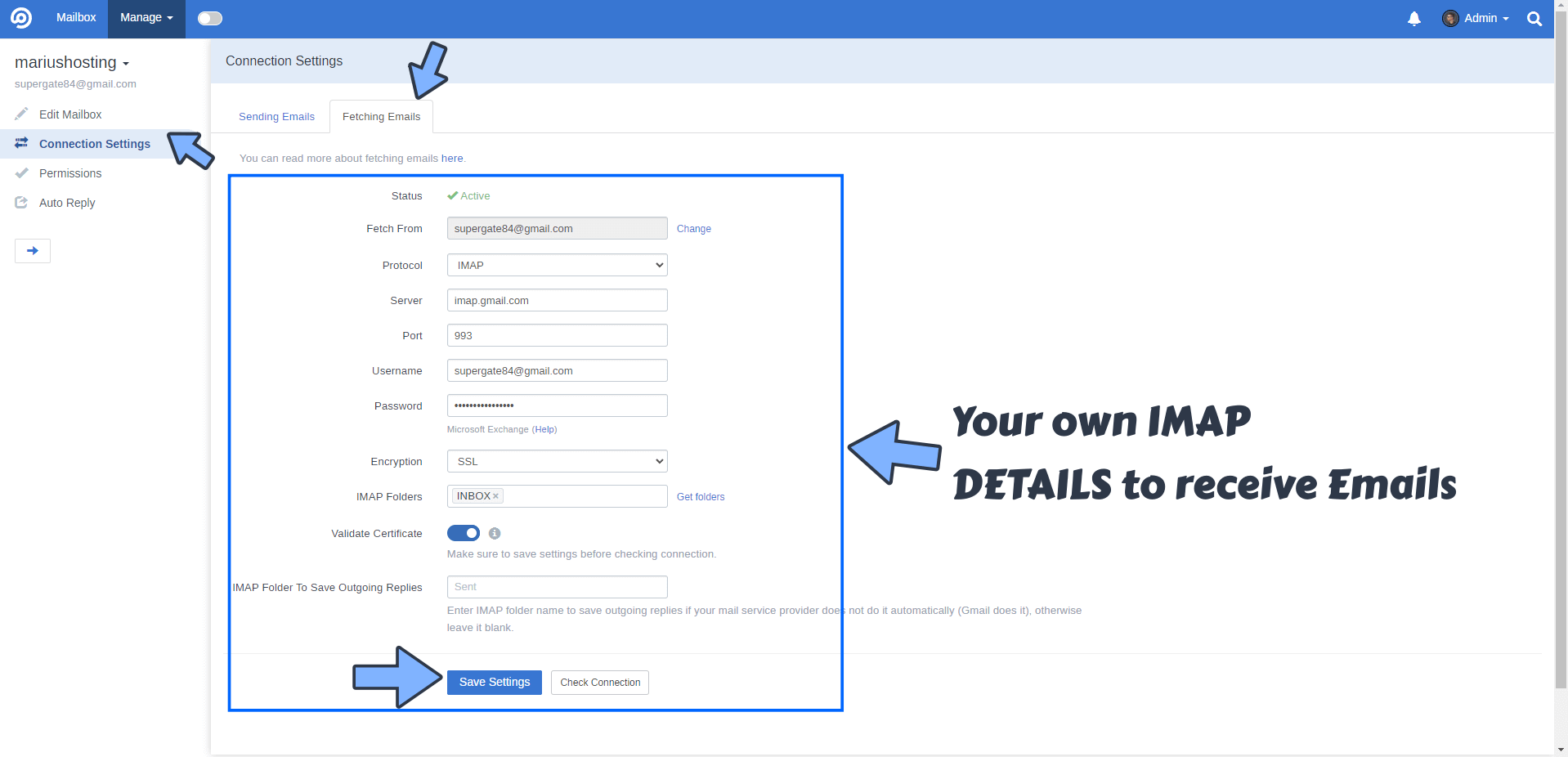
Your FreeScout dashboard at a glance!

Enjoy FreeScout!
If you encounter issues by using this container, make sure to check out the Common Docker issues article.
Note: Can I run Docker on my Synology NAS? See the supported models.
Note: How to Back Up Docker Containers on your Synology NAS.
Note: Find out how to update the FreeScout container with the latest image.
Note: How to Free Disk Space on Your NAS if You Run Docker.
Note: How to Schedule Start & Stop For Docker Containers.
Note: How to Activate Email Notifications.
Note: How to Add Access Control Profile on Your NAS.
Note: How to Change Docker Containers Restart Policy.
Note: How to Use Docker Containers With VPN.
Note: Convert Docker Run Into Docker Compose.
Note: How to Clean Docker.
Note: How to Clean Docker Automatically.
Note: Best Practices When Using Docker and DDNS.
Note: Some Docker Containers Need WebSocket.
Note: Find out the Best NAS Models For Docker.
Note: Activate Gmail SMTP For Docker Containers.
